|
There are many different types of meditation, but the goal is always the same: to achieve a meditative state. Walking meditation is a beautiful practice that not only relaxes your body and mind but can also lead you into deeper states of consciousness, such as Alpha and even Gamma brainwave states, where profound realizations happen. Here’s how to approach it to get the most out of the experience: 1. Choose the Right Trail
2. Minimize Distractions
3. Engage All Six Senses Fully experience your surroundings through:
Take your time. Stop and observe. Take photos if you feel inspired — nature is the ultimate playground for your inner artist. 4. Deepen Presence When you relax into the present moment, your experience of nature intensifies — similar to how senses are heightened under the influence of edibles. One reason for this is simple: full concentration on the now magnifies your experience. The vast majority of nature has never been truly experienced by most humans — not because it isn’t beautiful, but because our attention is often elsewhere. 5. Be Mindful
6. Set Intentions, Not Expectations
7. Cultivate a Childlike Curiosity Children are naturally curious — that’s why they learn so quickly and experience so much joy. Scientists and passionate people share this trait too: they remain curious, which keeps their mind and heart alive. Adopt a spirit of curiosity during your walk — it will deepen your experience and open new doors within you. 8. Try New Sensory Exercises
9. Understand Brainwave States Meditation often aims to move your brain into deeper states:
During walking meditation, you’ll likely move in and out of Alpha and Gamma. Let it happen naturally — never force it. Relaxation comes first. Depending on your current mood and state of mind, it might take 20–30 minutes to start feeling relaxed and present. Once in Alpha:
In both states, you’re much more likely to experience epiphanies and “aha” moments — profound realizations that may even be life-changing. 10. Why Epiphanies Happen Normally, our daily lives interrupt our thoughts constantly. We accumulate fragmented, incomplete thoughts that never fully connect. But when the right environment, relaxation, mood, information, and attention come together, your mind naturally makes connections between those fragments — unlocking wisdom already inside you. (I’ll write more about this important process in a future post.) 11. Pace Yourself
Reminders
Suggested Questions and Prompts for Walking Meditation If you feel called to, you can take one or two reflection questions with you on your walk. You can also allow your intuition to guide you naturally without any set focus. Either way, there is no need to force insights or outcomes—set your intention to stay open, curious, and present, and trust that whatever needs to arise will come in its own time. If you want structure, try asking yourself:
Or simply notice and reflect:
Gentle Tips
Remember, the goal is not to force answers but to create the space where answers naturally arise. Final Thoughts Walking meditation is a beautiful practice of reconnecting—with yourself, with nature, and with the present moment. Each walk will be different. Some days you may feel deeply connected and inspired; other days you may simply enjoy a peaceful stroll. Both are valuable. Trust the process. The more you practice, the more natural it becomes to enter deeper states of awareness. Let nature be your guide, your mirror, and your playground. Walk with presence, curiosity, and an open heart—and allow the wisdom within you to arise when the time is right. Also check out this post about The Healing Power of Nature We May Not Know.
0 Comments
Imagine sitting in a car. You’re the observer. But who’s driving? For most people, the answer is the ego—firmly gripping the wheel, speeding toward desires, defending against imagined threats, chasing approval, status, and power. Meanwhile, the higher self—the wise, calm navigator—sits quietly in the backseat. But what happens when we let ego drive not just our lives, but our entire world? Let’s explore what the ego truly is, why it exists, how it functions in the brain, and what happens when we allow it to dominate—individually and collectively. What Is the Ego? In psychology, the ego is the part of our mind that helps us function in the world. It negotiates between our instincts (id), moral ideals (superego), and external reality. It forms a sense of identity—the “I” that interacts with the world. In spirituality, the ego is the false self. It’s the mask we wear, the roles we play, the stories we believe about who we are. It operates in separation, fear, and comparison. It says, “I am this body, this status, this job, this belief.” But none of those are truly you. How the Ego Operates in the Brain The ego thrives on dopamine—the brain’s reward chemical. Every time you receive praise, a win, a like on social media, or prove someone wrong, the ego feels validated. You get a dopamine hit. You feel important. But it doesn’t last. This is why the ego constantly chases--more money, more validation, more control. It also reacts quickly to threats, real or perceived. A raised eyebrow can feel like an attack. The ego’s job is to protect the false identity it has created. So it responds with anger, pride, defensiveness—or aggression. It was once useful for survival. But now, it mostly defends illusions. When the Ego Causes Suffering Let’s say someone insults you. You feel rage. That’s the ego defending its image. In that moment, you suffer from the intensity of the emotion—and you may hurt someone else in response. The ego’s mission is to maintain its version of truth. It justifies its reactions and rarely admits fault. That’s why it’s hard for people trapped in ego to back down, apologize, or reflect. This isn’t just personal—it’s collective. The Rise of the Ego-System We live in an Ego-System—a society built to feed and reward egoic behavior. From advertisements that say, “Look what they have—you need this too,” to social media platforms that reward attention-seeking and outrage, we are constantly being trained to feed our false self. The bigger the ego, the bigger the desires—and the greater the consumption. Success is often measured not by inner peace or love, but by how much you have, how loud you are, and how many people follow you. This system has normalized ego-driven behavior. We excuse it, reward it, even admire it. Famous Examples: When Ego Rules Let’s take a closer look at a few familiar figures: Donald Trump Regardless of politics, he’s widely seen as someone with a strong ego. His success has often come through fear-based negotiation, force, and bold self-promotion. In an ego-driven society, that’s effective. We say, “He gets things done,” even if the cost is emotional, relational, or moral. But this approach brings long-term damage—internally and externally. Resistance follows force. Power built on fear cannot bring peace. Elon Musk A visionary with enormous ambition, but his unfiltered tweets and provocative behavior reveal a restless ego at work. He may create groundbreaking innovations, but the thrill of ego often takes center stage—sometimes overshadowing the mission. This isn’t judgment—it’s observation. We all have ego. But the bigger it grows, the harder it is to see clearly. History Doesn’t Lie Let’s reflect on the past:
The ego always crashes. It’s not a question of if—but when. No illusion can last forever. What’s built on fear, separation, and pride will eventually collapse under its own weight. The Alternative: Letting the Soul Drive The ego isn’t evil. It’s just not meant to lead. The goal isn’t to kill the ego—it’s to move it to the backseat. Let your higher self—your soul, your truth, your deeper wisdom—take the wheel. The ego can still speak up when it needs to protect or push you into action. But it doesn’t need to drive your decisions, relationships, or life purpose. Because a life led by ego may win battles—but it loses peace. And a world led by ego might gain power—but it sacrifices soul. A Final Reflection We are in a time of heightened ego momentum. The world feels louder, angrier, and more divided. That’s not just coincidence—it’s the ego-system in full swing. But awareness is the beginning of transformation. Notice the voice in your mind that demands, defends, and divides. Then ask: Who is really driving? When the soul leads, the path is slower, softer, but infinitely wiser. Want to dive deeper into this topic or share your reflections? Leave a comment or share this article with someone navigating their own ego journey. Let’s raise collective awareness—one soul at a time. Have you ever felt stuck in a phase of life and wondered why you’re going through it? You’re not alone. But here’s something to remember: Every season has a purpose. Even the most difficult ones are not without meaning. They often arrive to teach us something our soul needs to grow. Sometimes it’s one big lesson. Sometimes it’s many, unfolding slowly over time. If you ask “What’s wrong with me?” you’ll only find frustration. But if you ask “Why am I going through this season, and what am I meant to learn?”—you begin to shift from confusion to clarity. The secret is to focus on the lesson, not the event. Shift your attention away from the external circumstances and look inward. What patterns are repeating? What emotions are surfacing? What beliefs are being challenged? Awareness Is the Key The lessons of life are always present—but our awareness isn’t always developed enough to see them. That’s why cultivating awareness is essential. When you raise your level of awareness, you begin to recognize the subtle opportunities for growth that were always there. As the saying goes, “When the student is ready, the teacher appears. When the student is truly ready, the teacher disappears.” It’s not about the presence of the teacher—it’s about the readiness and awareness of the student. Once the student begins to see clearly, everything becomes a teacher—even themselves. Why Awareness Calms the Storm When you focus on uncovering the lessons, you naturally feel calmer. You’re no longer fighting your season—you’re learning from it. Emotions no longer run the show. And that’s when something beautiful happens: your prefrontal cortex activates. This is the part of your brain responsible for decision-making, planning, and reasoning. Instead of reacting impulsively, you start to make grounded, intentional choices. This doesn’t mean you shut off your intuition. In fact, the opposite is true. When you’re not clouded by emotional noise, you can actually feel your intuition more clearly. It no longer has to shout over your inner chaos to be heard. Trust Your Season So next time you’re in a tough season, pause. Don’t fight it—feel into it. Learn from it. The purpose will reveal itself… as it always does. You’re not stuck. You’re becoming. You’re not lost. You’re being guided. Everything in your life—especially the difficult seasons—is part of your awakening. If this message resonates with you, share it with someone who might need it right now. And if you’re currently in a tough season, take a breath, and remember: the lesson is not in the storm—it’s in how you move through it. Have you ever wondered why conflict seems inevitable with certain people in your life, especially family members? No matter how much you grow, they still treat you the way they always have—like the child, the troublemaker, or the person they once knew. This disconnect often leads to frustration, misunderstandings, and even emotional pain. The Root of Conflict: A Perception Gap Conflict often arises when who others think we are no longer matches who we have become. They interact with an outdated version of us, while we expect them to see and respect the person we are today. For example, a parent may still treat their adult child like they are incapable, simply because that’s how they remember them. Meanwhile, the child—now grown and independent—resents being treated that way. The result? Repeated arguments, emotional triggers, and a cycle of frustration. This dynamic isn’t just limited to parent-child relationships; it happens in friendships, romantic relationships, and even workplaces. The version of you that people hold in their minds is often based on past interactions, and unless something forces them to update their perception, they continue responding to you in the same old ways. Why People Struggle to See Our Growth People are naturally resistant to change—especially when it comes to relationships. Familiarity feels safe, even if the dynamic is unhealthy. When someone sees you differently, it forces them to question their role in the relationship. For example, a controlling parent might feel less needed if they acknowledge that their child has become independent. A long-time friend may feel threatened if they see you growing in ways they haven’t. A romantic partner may resist change because they fear losing the dynamic they once knew. Without realizing it, people may try to pull you back into old patterns not out of malice, but out of their own fears and insecurities. How We Keep Ourselves Stuck in Old Dynamics Even when we’ve grown, our reactions often reinforce the past version of us. If you’ve always argued with a parent who belittles you, reacting defensively only confirms their belief that you are still the same. If a friend still treats you like the reckless person you used to be, and you get frustrated instead of calmly correcting them, you feed their outdated perception. This is why it’s refreshing to meet new people. They see us as we are today—without the baggage of past interactions. But this doesn’t mean old relationships are doomed. They can be rekindled if both parties become aware of these dynamics. How to Shift the Relationship Dynamic 1. Understand Their Perception • Instead of assuming they are intentionally disrespecting you, recognize that they simply don’t see your growth yet. • Ask yourself: “What version of me do they see?” and “Why might they struggle to update that perception?” 2. Communicate Your Growth • You can’t expect people to just know you’ve changed. Show them through actions and words. • Example: Instead of saying, “I’m not a child anymore,” demonstrate it by handling situations with maturity and confidence. 3. Stop Reacting Like Your Old Self • When you react emotionally in a way that matches their outdated view of you, you reinforce it. • Instead, respond as your present self—with calmness, confidence, and clarity. 4. Give It Time • People don’t change their perceptions overnight. Consistently embody the new version of yourself, and eventually, they will have no choice but to recognize it. Final Thoughts Conflict in relationships isn’t always about who is right or wrong—it’s often about perception gaps. Your growth is real, but the people in your life may not see it yet. Instead of expecting them to automatically adjust, take responsibility for helping them see the new you. The more aware we are of these dynamics, the more power we have to break the cycle and create healthier, more fulfilling relationships. I personally believe that life purpose is something we remember from a spiritual perspective rather than something we create. Of course, this depends on a person’s beliefs, and their viewpoint may differ. For me, I remembered my purpose when I discovered my passion—helping and motivating others to reach their full potential. I believe my purpose was already determined before I was born, but it remained dormant or was gradually unfolding as I matured. When the time was right, I became aware of it, understood it, and eventually began embodying it. This process has been gradual, but now my purpose is very clear to me: to learn, to experience, and to serve others. I believe there was a reason for me to come back to Earth, meaning my purpose was already determined before birth. Once my soul defined this purpose, it had to manifest it into reality—into a physical form—so I was born with this purpose written inside me. But here’s the key: It’s not that you are looking for your purpose. Your purpose has always been guiding you. We often think of purpose as something we must actively seek, as if it’s hidden somewhere outside of us. But in reality, our purpose is always present, subtly directing us through our experiences, passions, and even challenges. The process of life itself is designed to help us remember and align with it. An Analogy: The Meeting of Forgotten Purpose Imagine we all have a condition—not Alzheimer’s, but a type of forgetfulness where we remember bits and pieces, just not everything clearly. We find ourselves in a meeting but don’t remember why we’re there. The entire time, we’re trying to recall the purpose of the meeting and our role in it. We try different things to spark our memory, hoping to find something that feels right, but nothing fully clicks. Since our memory is unreliable, we rely on feelings and intuition. Deep down, we sense we’re in the right place—we planned to be here—but we’re not truly fulfilling our purpose because we don’t fully remember what we came to do. Others in the meeting are in the same situation. Some might remember more than others. Together, we start piecing together clues, helping each other recover fragments of our memory. As more people remember, the purpose of the meeting becomes clearer, and soon, things start moving in the right direction. The key to feeling at peace isn’t just remembering the purpose—it’s fulfilling it. Once we recall why we’re here, the anxiety and frustration fade, giving us clarity. Instead of spending all our time just trying to remember, we can focus on doing what we came here to do—contributing, making a difference, and even helping others remember their purpose too. For Spiritual and Non-Spiritual Perspectives For those on a spiritual path, the journey of purpose looks like this: Higher purpose → Manifested → Living and remembering our higher purpose → Fulfilling our purpose. For those who do not hold spiritual beliefs, purpose can still be deeply meaningful: Nothing → Something → Lost/Confused → Finding a purpose → Fulfillment. Even without believing in a higher purpose, one can still enter “the meeting” with a reason—to learn, to contribute, and to experience life. There’s nothing wrong with not believing in spiritual destiny. The key is long-lasting fulfillment, rather than chasing fleeting goals. Why Does Purpose Seem to Change? Why is it that sometimes we feel certain about pursuing something, only to realize later that it no longer feels right? Because your goal was never meant to last forever. It may have even been aligned with your larger purpose, but only as a fraction of what you were meant to accomplish. The universe guides you into doing something, then out of it, so you can continue fulfilling your greater purpose. Mind vs. Soul: The Illusion of Purpose Purpose exists for the mind at the human level—it needs direction to continue its journey. But the soul is already living its purpose, patiently progressing according to a greater plan. The struggle comes because the mind, limited by ego and human perception, cannot fully comprehend the soul’s deeper purpose. In many cases, the mind’s pursuit of purpose originates from the ego. The ego seeks identity, validation, and significance. It wants to feel special, to achieve something, to leave a mark. This is why people sometimes chase goals that later feel empty—because they were ego-driven rather than soul-aligned. But when the mind finally recognizes the soul’s true purpose, the two align, and purpose is naturally fulfilled. In other words, the moment you realize your true purpose, you are already living it. Whether you feel like you’ve accomplished or fulfilled your purpose is simply the mind trying to measure and understand something that was always in motion. A Lesson from 50 First Dates In 50 First Dates, Adam Sandler’s character, Henry, can be seen as a representation of God/Spirit Guide or an awakened friend trying to help someone (Lucy) recover her memory—just like how an awakened soul helps those who are still “asleep” remember their true purpose. Henry knows that Lucy will likely forget everything by the next morning, yet he has no expectations or frustration. Instead, he patiently works with her, bringing joy into her life each day. He meets her where she is, without force or pressure. Lucy, despite her memory loss, still experiences happiness in her day-to-day life. And Henry, through his unwavering commitment, lives with a sense of purpose every day. This mirrors the journey of awakening—some people forget who they are and why they’re here, but those who remember can gently guide them, not by forcing remembrance, but by being present, patient, and leading with love. In the end, whether one remembers or not, the key is to live with joy and purpose in each moment. “The world exists because of you, not the other way around.” - FeelaSoulphy Society often pushes us to be the best-to reach the top and stay there. But what happens when the title is lost? The truth is, you don’t need to be the best at what you do, as long as you give your best. Being the best is temporary. No one stays at the top forever, and you shouldn’t want to. Progress depends on people surpassing each other. If you attach your identity to being the best, you set yourself up for suffering when the inevitable happens. Look at top athletes-world records never last forever. Someone always comes along and breaks them. If an athlete’s entire identity is built around their record, losing it can feel like losing themselves. The Cost of Being the Best Many high achievers struggle with this reality. Here are two famous examples: 1. Michael Phelps - The most decorated Olympian of all time, yet after the 2012 Olympics, he fell into deep depression. He later admitted he felt lost without swimming, realizing that chasing gold medals had become his entire identity. 2. Tyson Fury - After reaching the pinnacle of boxing by defeating Wladimir Klitschko, he spiraled into depression, alcoholism, and even contemplated suicide. He later shared that his suffering came from having no purpose beyond being “the best”. These examples show that when success is tied to external validation, losing it can be devastating. The Power of Giving Your Best Instead of trying to be the best, focus on trying your best. This shift changes everything:
The irony is that those who always give their best often become their best-but without the fear of losing it. The Journey vs. The Destination Success is often seen as a destination, but in reality, it’s the journey that matters. Being the best is about reaching the top and proving something to the world. Giving your best is about continuous growth and proving something to yourself. The process of discovering your full potential is the real goal. If you only care about being the best, you stop learning once you get there. But if you focus on always giving your best, you never stop evolving. Let Go and Surrender The world encourages us to chase being the best, but it misunderstands the real path to fulfillment. Success isn’t about holding a title-it’s about becoming the best version of yourself through relentless effort. Try your best and let the universe take care of the rest. Success comes and goes, but self-mastery stays with you forever. A great teacher doesn’t need to explain what they know. They teach by their presence-by simply being. Likewise, a great student doesn’t depend on a teacher’s words to learn. Instead, they observe in silence and recognize the lessons hidden in everything. Take an apple, for example. To an ordinary student, it might be just fruit. But to a great student, the apple is a profound teacher. It shows patience in how it ripens, simplicity in the joy it offers, and abundance in the seeds it carries. Inside this single apple are the seeds to produce the next apple trees and potentially thousands more apples just like it. It’s a reminder that growth and possibility are always present, even in something seemingly small. The apple also reminds us of the deep interconnection we share with nature. It serves humans by providing nourishment, animals by feeding and sustaining them, and even insects through pollination. This cycle of giving and receiving reflects the interconnectedness of all life. The apple teaches us how each part of creation serves and supports the greater whole, offering abundance not just for itself but for all. In short, a great teacher doesn’t have to teach, and a great student doesn’t have to be taught. The difference lies in awareness. A great student recognizes that every moment, every person, and every object is a potential teacher. Their awareness turns the world into a classroom. Thus, the saying goes, “When the student is ready, the teacher will appear. When the student is truly ready, the teacher will disappear.” This happens not because of the teacher, but because of the student’s own awareness of the lessons they recognize for themselves. Ultimately, a great student becomes their own teacher. They no longer need external guidance because their heightened awareness allows them to learn from life itself. “Until you make the unconscious conscious, it will direct your life and you will call it fate.” — Carl Jung "Pain is certain, suffering is optional." - The Buddha “What you are aware of, you are in control of; what you are not aware of is in control of you.” — Anthony De Mello Most people go through life unaware that they are suffering. They accept their struggles, frustrations, and negative emotions as “normal,” believing they are just part of life. But what if I told you suffering isn’t your natural state? What if you could break free, not by avoiding pain but by understanding it? Suffering is a state. Whether it’s a state of mind or being, it’s not permanent. Like any state, it can be changed—but only if you become aware of it first. The truth is, what we are aware of, we can control. What we are not aware of controls us. And for many of us, suffering has silently taken control, shaping our thoughts, actions, and relationships without our knowing it. Common Forms of Hidden Suffering Suffering isn’t always obvious. Sometimes it manifests as anger, jealousy, or self-doubt. Other times, it hides behind habits, expectations, or feelings of inadequacy. Here are some examples of hidden suffering: • Feeling uneasy when others succeed (comparison) • Holding grudges or clinging to the past (attachment) • Constantly worrying about the future (fear) • Struggling with self-worth (insecurity or failure) • Numbing yourself with distractions like alcohol, drugs, or excessive fun (escape) Even subtle feelings, like frustration when stuck in traffic or envy when a friend gets a new car, can point to deeper unresolved suffering. Why Awareness Matters The first step to overcoming suffering is awareness. When you recognize that you are suffering, you naturally start seeking understanding and solutions. In today’s world, there is no shortage of information or resources to help—what’s missing is awareness. Awareness allows you to pause and reflect before reacting. It gives you the power to ask yourself, “Why am I feeling this way? What’s really behind this emotion?” With awareness, you take back control from the invisible forces shaping your life. The Ripple Effect of Suffering Your suffering doesn’t just affect you—it impacts everyone around you. A single moment of anger, fear, or jealousy can ripple out and influence others in ways you may not even realize. When you heal yourself, you also heal the world around you. Imagine how different history might have been if individuals like Hitler had encountered compassion or healing in their formative years. Every action we take, every word we speak, has the potential to either spread suffering or alleviate it. This isn’t about guilt—it’s about responsibility. Once you’re aware of your suffering, you have the opportunity to act consciously and make better choices for yourself and others. Suffering Is a Teacher Suffering is not inherently bad. It becomes destructive only when it is prolonged and unaddressed. From a spiritual perspective, suffering can teach us life’s most valuable lessons—if we are willing to learn. It’s not the pain itself that holds the lesson but how we respond to it. Do we numb it with distractions, or do we face it and seek to understand it? The sooner you acknowledge and learn from your suffering, the sooner you can free yourself from it. A Path Toward Peace Suffering is not your destiny. It’s a state, not a life sentence. The first step toward freedom is awareness. Start noticing your (FEARtw) feelings, emotions, actions, reactions, thoughts, and words. Observe how they influence your decisions and relationships. When you are aware of your suffering, you are already on the path to understanding and healing. You are no longer a slave to unconscious patterns—you are free to create a better life for yourself and those around you. The choice is yours: continue living in a state of suffering, or awaken to the possibility of peace, joy, and love. Awareness is the key that unlocks the door. Remember: Awareness is the beginning of transformation. For many, smoking isn’t just about the nicotine—it’s about the ritual. It’s a moment to step away from the noise of life, breathe deeply, and be present. In those few minutes, you might feel calmer, grounded, even centered. In a strange way, it feels like meditation. Here’s the truth: smoking does bring you into the present moment. The act of lighting up, inhaling, exhaling, and watching the smoke swirl engages your senses and momentarily quiets the mind. But here’s the catch—it doesn’t truly heal. Smoking gives temporary relief while harming your body, creating a cycle of dependency. The Science Behind the Calm 1. Dopamine’s Role: Smoking triggers the release of dopamine, the “feel-good” chemical in the brain. This creates a fleeting sense of relaxation and reward, but it also fuels dependency, as your brain craves more nicotine to sustain that effect. Mindfulness practices like meditation can naturally increase dopamine levels without harming your body. 2. Stress Relief or the Pause? Many smokers believe that cigarettes help reduce stress. However, research suggests it’s not the cigarette itself but the act of pausing, breathing deeply, and stepping away that brings relief. This is something you can achieve without nicotine, simply by practicing mindfulness or focused breathing. 3. The Power of Breath: Smoking involves deep inhalation, which mimics diaphragmatic breathing—a proven method for activating the body’s “rest and digest” system. Deep, slow breaths lower your heart rate, reduce blood pressure, and calm the mind. You can achieve these same benefits with intentional breathwork, without the toxic effects of smoking. 4. Breaking the Habit Loop: Smoking often becomes a conditioned response to stress, boredom, or anxiety. It follows the habit loop: cue (stress), routine (smoke), reward (relief). Mindfulness helps break this cycle by increasing awareness of your triggers and replacing the routine with a healthier alternative that still offers calm and presence. A Meditation for Smokers Trying to Quit If you’re looking for a way to replace the act of smoking, here’s a meditation designed specifically for you. It mimics the familiar rhythm of smoking while transitioning to a healthier habit of mindfulness and visualization. Visualization Meditation: “The Peaceful Cigarette” 1. Find a Quiet Space: Sit comfortably, just as you would when preparing to smoke. Hold your hands as if holding a cigarette, and close your eyes. 2. Visualize the Ritual: Imagine yourself lighting the cigarette. Picture it in detail—the feel of it in your fingers, the warmth of the flame. 3. Engage Your Breath: Inhale deeply, as if drawing in the smoke. Hold your breath for a moment, and then exhale slowly, visualizing the smoke leaving your mouth in soft, swirling clouds. Repeat this for the same amount of time it typically takes you to smoke a cigarette. 4. Shift the Imagery: As you continue, begin to change the visualization. Instead of smoke, imagine exhaling stress, tension, or negativity. With each inhale, imagine drawing in calm, healing energy. 5. End in Tranquility: Over time, replace the image of the cigarette with a scene of peace—a serene beach, a quiet forest, or simply a warm, glowing light. Let this become the focus of your meditation. 6. Repeat as Needed: Each time you feel the urge to smoke, return to this meditation. The act of pausing and visualizing will help you retrain your mind and body to associate the need for calm with a healthier practice. Eventually, you won’t need to visualize smoking at all—you’ll go straight to the place of peace. Reconditioning the Brain: How Visualization Helps Quit Smoking The brain is incredibly adaptable and has the ability to recondition itself through new experiences and habits. This process is known as neuroplasticity—your brain can form new neural pathways when you repeatedly engage in new behaviors or mental practices. When you smoke, your brain creates a strong connection between the action (lighting up, inhaling) and the reward (relief, calm). This creates a habit loop in your brain: stress → cigarette → relaxation. But here’s the fascinating part: Your brain doesn’t differentiate between real or imagined experiences. Whether you’re physically smoking or visualizing it in your mind, the brain responds to the signals and creates a similar experience. In your visualization meditation, when you imagine smoking—breathing deeply, exhaling, and feeling that calm—the same neural pathways are activated. However, over time, you can start to replace the cigarette imagery with something more peaceful. Your brain begins to associate the same sense of calm and relief with healthier practices, slowly reprogramming your mind to choose peace instead of nicotine. With repetition, the neural pathways associated with smoking weaken while those tied to relaxation, mindfulness, and tranquility strengthen. Eventually, you won’t need to visualize smoking at all—you’ll simply experience the calm directly, without the cigarette. A Healthier Way to Find Peace What if you could achieve the same sense of calm and presence without the harmful side effects? Imagine this: instead of reaching for a cigarette, you take a mindful pause. You breathe deeply, just as you would when smoking, but now it’s fresh air. You focus on your breath, your body, and the sensations around you. You’re still grounded in the present moment, but now you’re nourishing yourself rather than depleting. Next time you feel the urge to smoke, ask yourself: What am I really craving? Is it the cigarette, or is it the moment of calm? And if it’s calm you’re after, what’s stopping you from choosing a path that heals instead of harms? If you know someone who is trying to quit smoking or could benefit from more mindful practices, please feel free to share this meditation with them. Let’s spread the word of peace and self-care together. Judging someone based on their appearance—or even on your experiences with them—rarely captures who they truly are. When we judge, we often see through the lens of our own past and present states, which can color our perception. This is known as projection: we’re using our own experiences and mental state to interpret someone else’s, often without realizing it.
When you judge a person, you’re often judging the outcomes of their experiences, not the person themselves. Who they are is shaped by a lifetime of unique experiences, struggles, and perspectives that we may never fully understand. So, when you judge, are you truly assessing them, or are you reflecting aspects of yourself? Are you judging their experiences, which you know little about, or projecting your own onto them? This issue becomes even more complex when we judge based on someone’s culture or background. Often, we rely on limited information—perhaps what we’ve read, heard, or experienced in a few interactions with certain individuals. But this narrow lens is insufficient to conclude anything substantial about an entire culture or any person within it. Furthermore, our judgments are influenced by our own cultural understanding, which inevitably shapes our biases. Since no two cultures share the same history, judgments based on these fragments are inherently flawed. This flaw becomes especially damaging when we judge entire groups or races based on limited interactions, leading to stereotyping. If understanding an individual requires deep awareness, imagine the impossibility of truly grasping the diversity of an entire race or culture. In addition to being incomplete, judgment also affects the one doing the judging. Even if we never manifest these judgments into actions, they impact us internally. Judgment rarely brings peace, joy, or love; instead, it stirs subtle emotions like irritation, disgust, and annoyance, and can even escalate to feelings of anxiety, fear, anger, or stress. Imagine the state of mind created by constantly judging someone or a group of people. When judgment becomes habitual, it can cloud our inner peace, draining our energy and well-being. Every little judgment we hold also creates a subtle distance between us and others. These small moments of separation accumulate over time, creating a much larger divide until we feel completely separate from the person or group. This is how judgment slowly builds an illusion of separation from the original unity that binds us all. In truth, we are one, interconnected like threads in a single tapestry, inseparable in the flow of energy that sustains us. The separation we feel is an illusion, constructed by our physical eyes and mind. Each judgment reinforces this illusion, eventually forming a belief system that shapes our decisions and interactions. When we forget our unity and buy into this illusion of separation, we disconnect from our true nature and from the peace that comes from remembering we are all part of each other. It starts with small, seemingly harmless judgments. At first, they might feel insignificant, but over time, these judgments can grow, breaking down relationships between lovers, friends, and family. The disconnection can expand into entire communities, countries, and even lead to global conflicts. Wars, whether personal or political, often begin with small arguments or misunderstandings—rooted in judgments that escalate and spiral out of control. This is the power of judgment: what begins as a small seed of separation can eventually cause massive division and harm. In this way, judgments are fleeting and subjective snapshots—rarely capturing the whole truth of a person or a group. To judge fairly would require fully understanding their experiences, which is nearly impossible. So perhaps the best approach is to hold judgment lightly, with an open mind and heart, remembering the unity that binds us all. |
AuthorFeelasoulphy Categories
All
Archives
December 2024
|







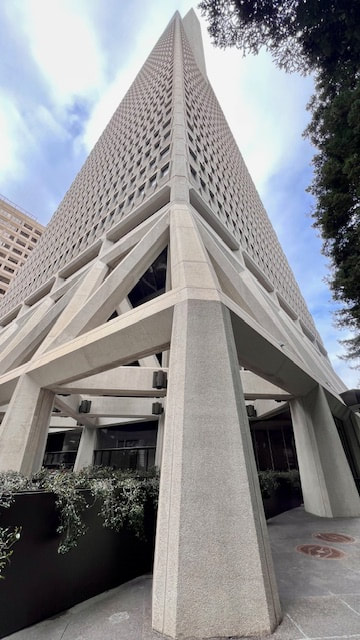
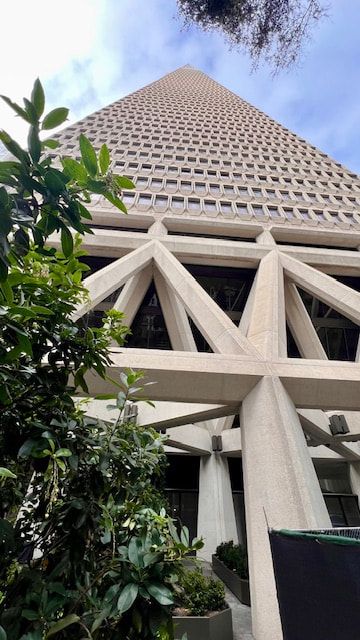
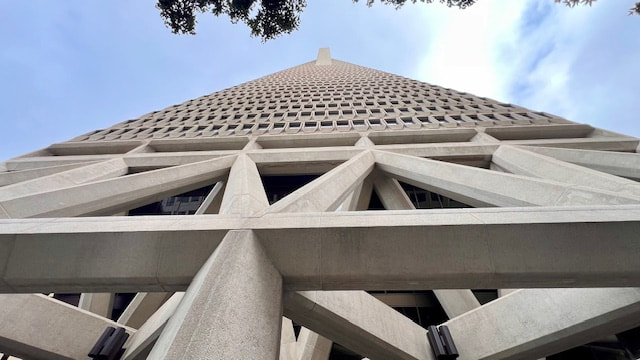


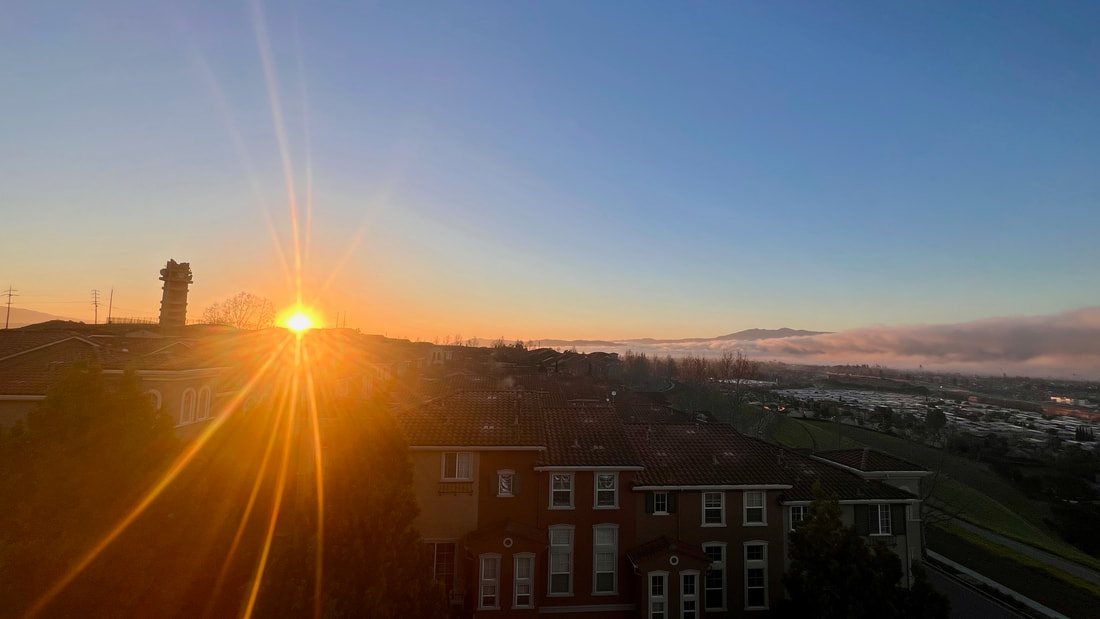


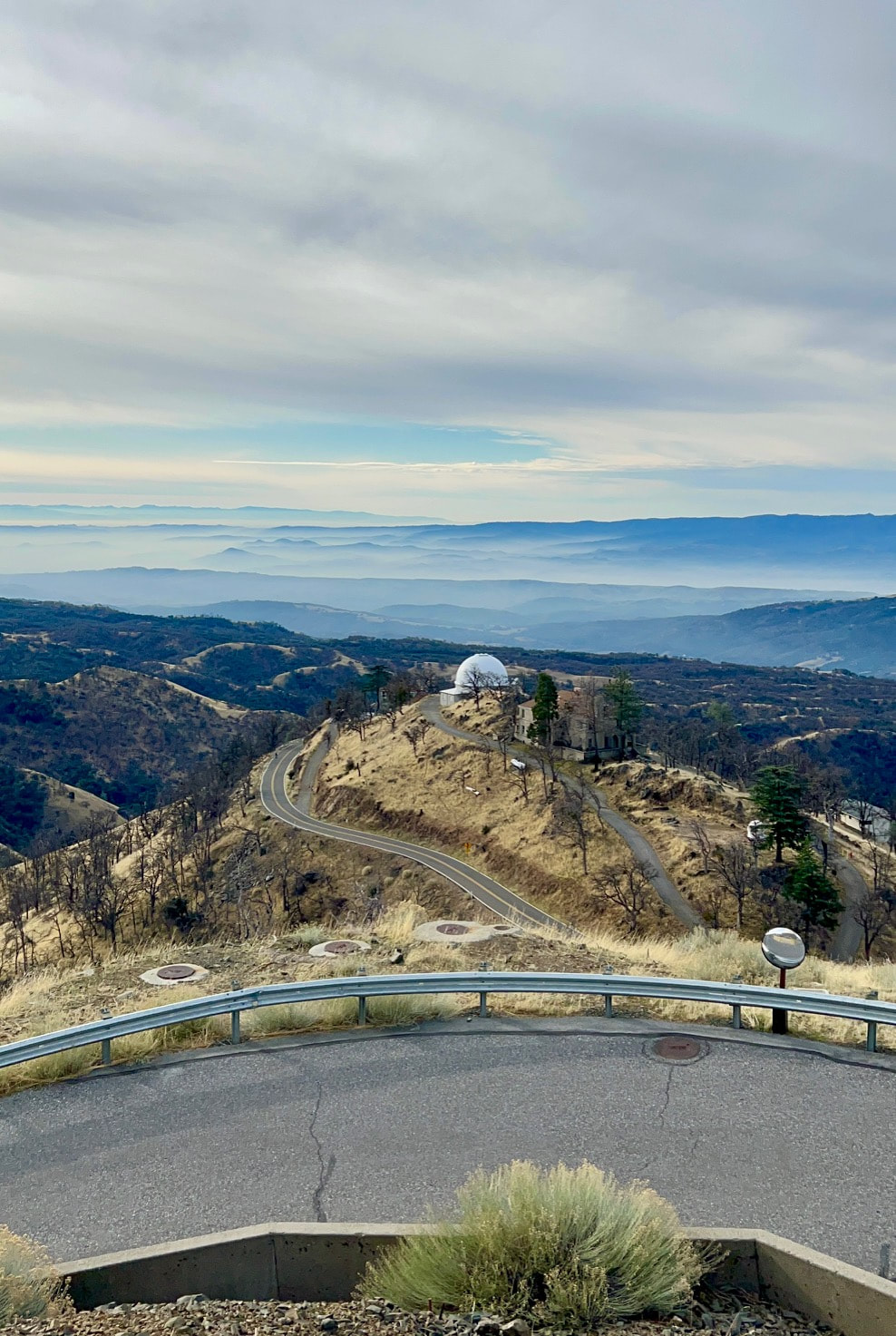
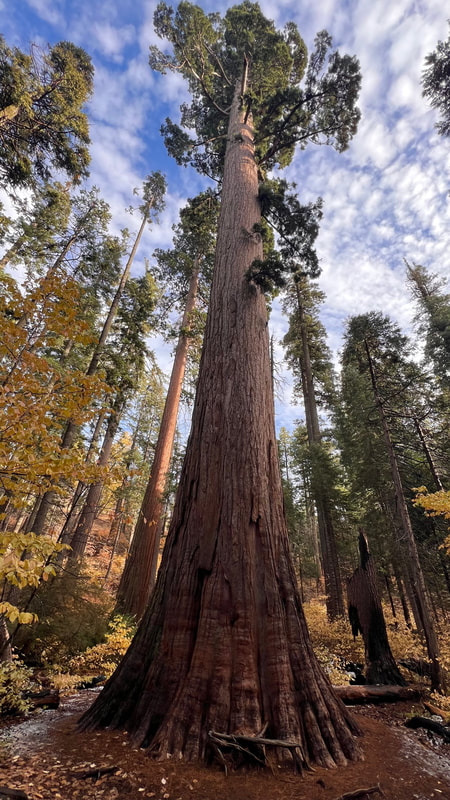
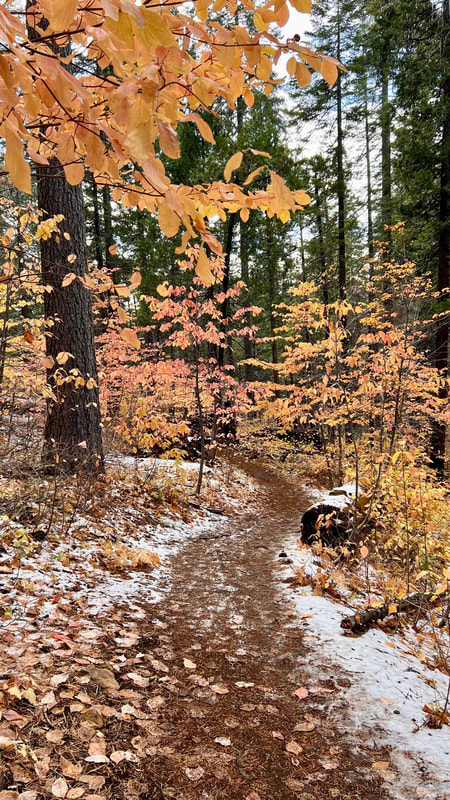
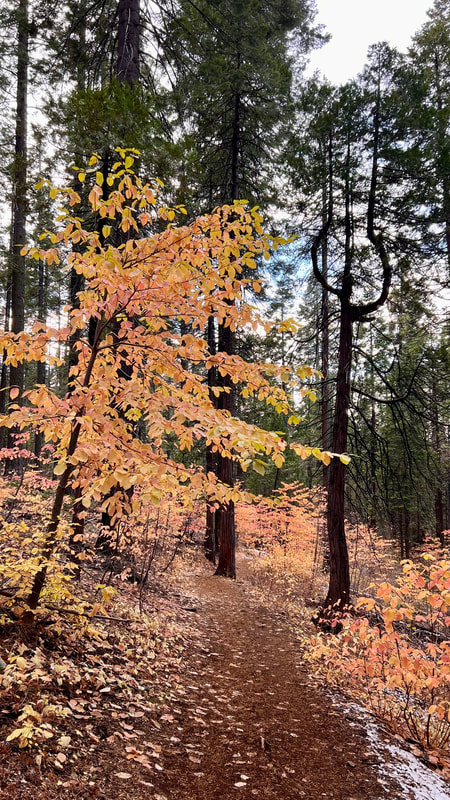
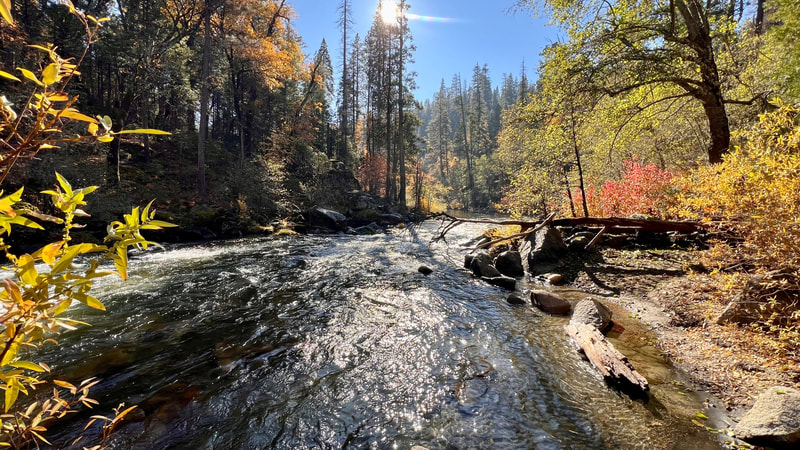
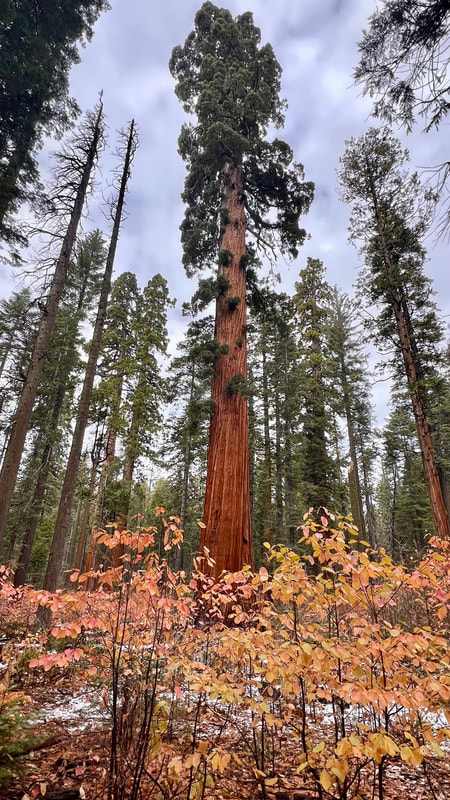
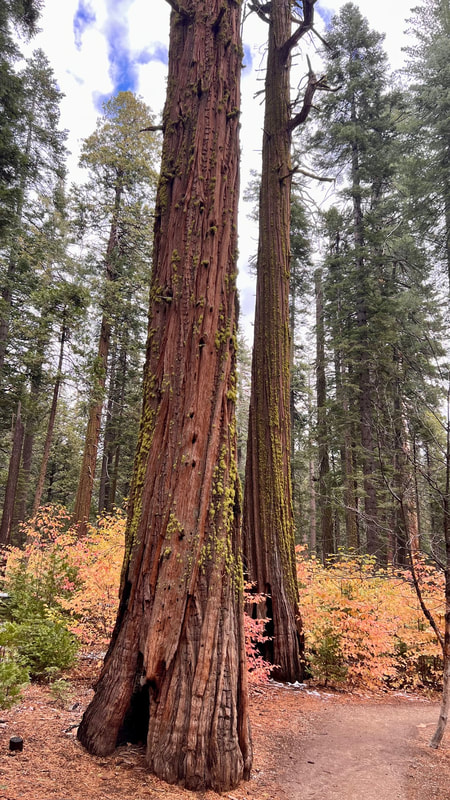
 RSS Feed
RSS Feed